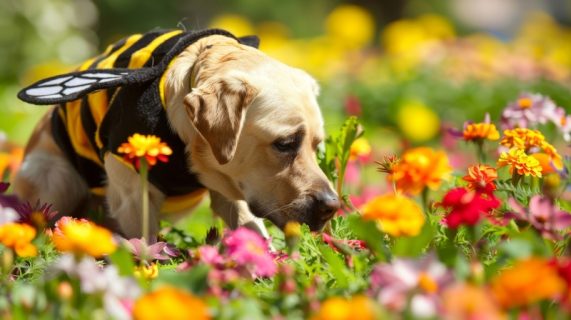
When Queen Elizabeth II passed away in 2022, much of the public was baffled by the public announcement that the palace bee hives had been notified.
Apprising the royal bees of Her Majesty’s death wasn’t an eccentric act done by quirky nobility. The belief that bees must immediately be told about significant events in their “household,” occasions such as a death, birth, or marriage – is a centuries old tradition that can be traced to the Celtic belief that bees were messengers between the living and the dead. Furthermore, failure to tell bees immediately of a death was thought to result in the bees failing to make honey, or worse, falling ill, dying, or leaving the hive altogether. To prevent this, beekeepers draped a bit of black cloth or ribbon on the hive to signify that they were in mourning, and would even knock on the frame of the hive box to update the bees.
In keeping with the custom, official Palace beekeeper, John Chapple, placed black ribbons tied into bows on the Royal Palace hives after Queen Elizabeth died before informing them that their mistress had died and King Charles would be in charge from now on. The tradition of “telling the bees” and is still observed by many beekeepers today, a testament to the connection that we humans have with even the tiniest creatures with whom we share our world.
Bees are critically important in our world (Albert Einstein even suggested that human survival could depend on honey bee pollination), and here we seamlessly pivot (grin) to another creature upon whom we depend in an apiarian sense: Dogs. How they help us with bees might surprise some of us.
American foul-brood (AFB) is a devastating bee killing disease caused by the spore forming bacterium, Paenibacillus. The bacteria causing AFB leaves behind a detectable foul smell, and it makes perfect sense to us now that scent-detection dogs are part of the fight against American foul-brood. Once found, beekeepers can destroy or treat the hive with antibiotics quickly and save countless colonies.
But ten years ago, this wasn’t common, and a Labrador Retriever named “Bazz” created a stir in the South African beekeeping community when he was trained by beekeeper, Josh Kennett, to scent detect the spore forming bacterium. Kennett went so far as to create a bee-keeping suit to protect “Bazz” from bee stings.
“Bazz” was hardly an outlier.
The Maryland Department of Agriculture has had a “bee dog” on staff since 1982, and as of 2016, was believed to be the only state agency in the country using a dog to detect AFB when their “staff dog,” When another black Lab, “Klinker,” retired in 2015, “Mack” (a yellow Lab) took his place.
Bumble bee nests which can be notoriously difficult to find, an impediment to researchers looking at bumble bee populations and nesting habits. Dogs, however, are able to find the nests which enable scientists to gather data revealing what, if any, are the impacts of environmental changes on bee populations. Bumblebees are worth billions of dollars to the U.S. economy, and invaluable to ecosystems. As of 2021, Darwin, a German Shorthaired Pointer, was America’s only conservation detection dog specifically trained to sniff out bumblebee nests which are found in the ground. Meet Darwin:
A year later, in Wisconsin, “Betty White,” and her partner, “Ernie,” joined the bumble bee nest sniffing family for researchers. The pair were trained to locate Wisconsin’s approximately 20 species of wild bumble bees. Their slogan: “Making a Snifference.”
Read more about the bumble bee dogs in this abstract.
Image by © Oksana Smyshliaeva | Dreamstime
